
Wellness
Conditions that Chiropractic Treat?
Chiropractic care can address many different conditions or disorders. It’s important that you communicative with your chiropractor so they can understand what exactly is going on and treat you in the best possible way. Whether it be a chiropractic adjustment, manual manipulation, or soft-tissue disorder, chiropractic care encompasses a wide array of treatments that can help alleviate imbalances and disorders.
Your chiropractor will know which treatment methods would work best for you based on your condition and circumstances. Please do not hesitate to clearly explain your symptoms as transparently as possible to give your chiropractor the best chance of treating you effectively.
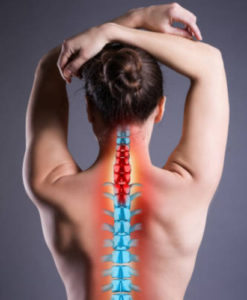 There’s neck pain and whiplash.
There’s neck pain and whiplash.
Neck pain can be caused by strains, tendons, joints, or nerves in the cervical spine. Chiropractic therapy is effective at relieving neck pain and reducing or eliminating it completely. Your chiropractor will develop a strategy to treat you and help you decrease neck pain by identifying the source of the imbalance and treating it at its core.
Whiplash is a type of neck sprain that often results from a car accident. Whiplash causes pain and stiffness in your neck. Pain may be worse when you try to turn your head. You may even feel dizzy or sick to your stomach. Chiropractic adjustment may help. A chiropractor may have you do exercising and stretching at home, too, and show you how to use heat or ice to reduce muscle spasms and swelling.
Your chiropractor can treat you irrespective of whether your neck discomfort is caused by an accident or injury, or whether it’s due to poor posture, lifestyle, or congenital factors.
 Chiropractic care is commonly used to treat back pain, and it often eliminates the need for medication or surgery. Different people require different types of treatment, but chiropractic care can offer the tools to correct the spine. When the spine is corrected, pain can be significantly reduced or even eliminated.
Chiropractic care is commonly used to treat back pain, and it often eliminates the need for medication or surgery. Different people require different types of treatment, but chiropractic care can offer the tools to correct the spine. When the spine is corrected, pain can be significantly reduced or even eliminated.
Your sacroiliac (SI) joint is a big joint at the bottom of your spine. SI joint problems cause a different type of low back pain. You may feel this pain in your buttock or the back of your thigh. Chiropractors treat this type of pain with chiropractic adjustment. The chiropractor might also teach you how to avoid straining your SI joint. And, he or she might give you some exercises to strengthen your core muscles, which are the muscles that support this joint.
 You probably think about back and neck pain when you think about chiropractic care. However, a chiropractor might also be able to help you if you have a stiff and painful shoulder. This condition is called frozen shoulder syndrome. People with frozen shoulder may have less pain and more movement after chiropractic care. Your chiropractor will stretch the muscles surrounding your shoulder and show you how to perform more stretches at home.
You probably think about back and neck pain when you think about chiropractic care. However, a chiropractor might also be able to help you if you have a stiff and painful shoulder. This condition is called frozen shoulder syndrome. People with frozen shoulder may have less pain and more movement after chiropractic care. Your chiropractor will stretch the muscles surrounding your shoulder and show you how to perform more stretches at home.
 Most often, wear and tear on the knee joint causes knee osteoarthritis. This is a very common condition. Chiropractic care might help. Chiropractors sometimes do back adjustments along with knee adjustments. This type of treatment may work better than knee exercises alone. Some people treated with chiropractic adjustment have less pain and better movement after a few weeks of treatment.
Most often, wear and tear on the knee joint causes knee osteoarthritis. This is a very common condition. Chiropractic care might help. Chiropractors sometimes do back adjustments along with knee adjustments. This type of treatment may work better than knee exercises alone. Some people treated with chiropractic adjustment have less pain and better movement after a few weeks of treatment.
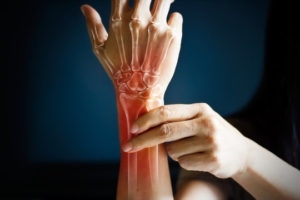 Carpal tunnel syndrome is a repetitive stress injury, a condition that affects the hands and wrists. The most common symptoms include tingling, numbness, and weakness in the middle finger, index finger, and thumb as well as pain in the wrist or hand that gets worse at night.
Carpal tunnel syndrome is a repetitive stress injury, a condition that affects the hands and wrists. The most common symptoms include tingling, numbness, and weakness in the middle finger, index finger, and thumb as well as pain in the wrist or hand that gets worse at night.
Adjustments of the upper spine, arm, and wrist can help. When the spine is not in alignment, it could exacerbate carpal tunnel syndrome. A chiropractor will use spinal manipulation to realign the spine to its correct position. These manipulations, or adjustments, are often performed by hand, but at times he or she may use special devices or a special table made specifically for chiropractic treatments. In addition to the spine, the chiropractor may make adjustments to other areas of the body such as the arm and wrist.
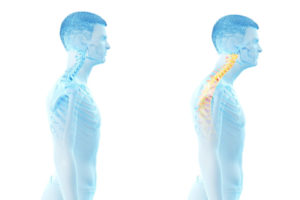 People of all ages, including children and adolescents, can suffer from forward head posture (nicknamed Text Neck). Because we spend time hunching over as we watch TV, look at our cell phones, play with iPads, or use gaming devices, we may cause the cervical spine, which is the portion of the spine in the neck, to lose its natural curve or become overly curved.
People of all ages, including children and adolescents, can suffer from forward head posture (nicknamed Text Neck). Because we spend time hunching over as we watch TV, look at our cell phones, play with iPads, or use gaming devices, we may cause the cervical spine, which is the portion of the spine in the neck, to lose its natural curve or become overly curved.
 A herniated disc is one of the most popular reasons people turn to chiropractic adjustments for relief. Also known as a bulged, slipped, or ruptured disc, this condition of the spinal bones can irritate nerves and result in numbness, pain, and weakness in the leg or arm. Chiropractic care, such as spinal manipulation, manual therapy, and therapeutic exercises can alleviate this condition.
A herniated disc is one of the most popular reasons people turn to chiropractic adjustments for relief. Also known as a bulged, slipped, or ruptured disc, this condition of the spinal bones can irritate nerves and result in numbness, pain, and weakness in the leg or arm. Chiropractic care, such as spinal manipulation, manual therapy, and therapeutic exercises can alleviate this condition.
 A chronic inflammatory disease, rheumatoid arthritis causes joint pain throughout the body. Inflammation can cause swelling, stiffness, and pain that can eventually lead to loss of joint function. Chiropractic care can help ease the tight muscles along the spine and treat the inflammation throughout the body from this condition. Since chiropractors try to improve the relationship between the nervous system and spine by realigning vertebrae, Rheumatoid Arthritis symptoms may be improved.
A chronic inflammatory disease, rheumatoid arthritis causes joint pain throughout the body. Inflammation can cause swelling, stiffness, and pain that can eventually lead to loss of joint function. Chiropractic care can help ease the tight muscles along the spine and treat the inflammation throughout the body from this condition. Since chiropractors try to improve the relationship between the nervous system and spine by realigning vertebrae, Rheumatoid Arthritis symptoms may be improved.
If you have pain due to osteoarthritis, chiropractic is one of the safest therapies you can use. But if you have an inflammatory disease, like rheumatoid arthritis, psoriatic arthritis or ankylosing spondylitis, your chiropractor will be more careful and may offer several adjunctive therapies that can help.
“If you’re having a flare in a knee that is causing you to walk awkwardly, it may lead to a secondary pain syndrome in the lower back. We might not treat an inflamed joint, but if we may be able to reduce overall pain by adjusting the pelvis to make daily living activities easier.”
 Chiropractic is an effective means of treatment for scoliosis, a condition that causes the spine to curve abnormally. Symptoms of scoliosis can be painful and visible in poor posture. With chiropractic care, however, the spine can be realigned closer to its proper position.
Chiropractic is an effective means of treatment for scoliosis, a condition that causes the spine to curve abnormally. Symptoms of scoliosis can be painful and visible in poor posture. With chiropractic care, however, the spine can be realigned closer to its proper position.
 TMJ (Temporomandibular joint disorder) has a range of symptoms including pain in or around the ear, headaches, neck pain, jaw pain and soreness, jaw pain when biting or chewing, difficulty opening and closing the mouth, popping or clicking noises when opening the mouth, jaw stiffness, tinnitus, dizziness, and even sensitive teeth when no other dental problems can be found. The wide range of these symptoms shows just how much your jaw muscles impact the surrounding joints and muscles.
TMJ (Temporomandibular joint disorder) has a range of symptoms including pain in or around the ear, headaches, neck pain, jaw pain and soreness, jaw pain when biting or chewing, difficulty opening and closing the mouth, popping or clicking noises when opening the mouth, jaw stiffness, tinnitus, dizziness, and even sensitive teeth when no other dental problems can be found. The wide range of these symptoms shows just how much your jaw muscles impact the surrounding joints and muscles.
When you visit us with jaw pain we’ll focus on 3 key muscles: the masseter, the temporalis, and the pterygoid. We’ll also pay close attention to the suboccipital muscles, jaw joint itself and the top 2 vertebrae because they greatly impact the jaw joint and we want to make sure everything is aligned properly. Once we’ve completed soft tissue work for jaw pain we move on to adjust and assess the jaw in a TMJ chiropractic adjustment.
 Foot pain & Plantar Fasciitis
Foot pain & Plantar Fasciitis
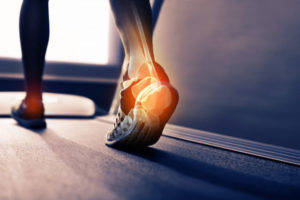 Ankle & Ligament Injuries
Ankle & Ligament Injuries
 A pulled muscle, or muscle strain, is when a muscle or its attaching tendon becomes torn. You can pull a muscle by overusing or stretching it farther than intended while playing sports, performing work tasks, or lifting something heavy. This stretching can cause micro-tearing in the muscle fibers and tendons, which can be quite painful.
A pulled muscle, or muscle strain, is when a muscle or its attaching tendon becomes torn. You can pull a muscle by overusing or stretching it farther than intended while playing sports, performing work tasks, or lifting something heavy. This stretching can cause micro-tearing in the muscle fibers and tendons, which can be quite painful.
Symptoms for a pulled muscle might include inflammation, redness, or bruising; muscle tenderness and weakness; pain while resting
Pain while engaging the injured muscle; inability to use the muscle at all
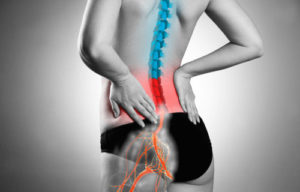 This condition refers to pain that radiates along the sciatic nerve, which can range from your lower back through your hips and down each leg. Sciatica typically occurs on only one side of the body. Chiropractic care treats the true cause of sciatica, which is nerve compression caused by vertebral subluxations. By making spinal adjustments, the nerve is decompressed and the sciatica pain is alleviated.
This condition refers to pain that radiates along the sciatic nerve, which can range from your lower back through your hips and down each leg. Sciatica typically occurs on only one side of the body. Chiropractic care treats the true cause of sciatica, which is nerve compression caused by vertebral subluxations. By making spinal adjustments, the nerve is decompressed and the sciatica pain is alleviated.
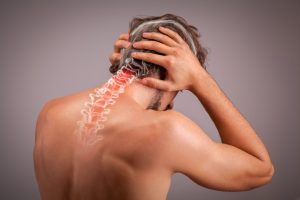 Chiropractors commonly see patients come in complaining of migraine headaches. Research has shown that chiropractic spinal manipulations can decrease migraine frequency, decrease pain, and reduce the need for migraine medication. The authors of the study suggest that chiropractic care reduces overall stress, which may, in turn reduce the effect of migraines. Often, this is because these ailments are often caused by misalignment in the cervical spine. Chiropractic care can provide significant relief. Triggers for migraine headaches may include certain foods. Your chiropractor can also give you advice on nutrition and some changes in your diet to help treat migraines and other types of headaches.
Chiropractors commonly see patients come in complaining of migraine headaches. Research has shown that chiropractic spinal manipulations can decrease migraine frequency, decrease pain, and reduce the need for migraine medication. The authors of the study suggest that chiropractic care reduces overall stress, which may, in turn reduce the effect of migraines. Often, this is because these ailments are often caused by misalignment in the cervical spine. Chiropractic care can provide significant relief. Triggers for migraine headaches may include certain foods. Your chiropractor can also give you advice on nutrition and some changes in your diet to help treat migraines and other types of headaches.
 Pregnancy pains often arise due to the physical and hormonal changes that occur as the body adapts to support a growing baby. Common issues include lower back pain, pelvic discomfort, and sciatic nerve irritation, often caused by weight shifts, postural changes, and ligament loosening from hormonal effects like relaxin. These changes can place strain on the spine, pelvis, and surrounding muscles, affecting overall mobility and comfort.
Chiropractic care helps by gently realigning the spine and pelvis, reducing pressure on nerves and improving overall balance in the musculoskeletal system. Techniques such as the Webster method are specifically designed to relieve pelvic pain and support optimal fetal positioning. Soft tissue therapies address muscle tension, while tailored exercises strengthen supporting muscles and enhance flexibility. Chiropractic care not only alleviates pain but also prepares the body for a smoother labor and delivery experience.
Pregnancy pains often arise due to the physical and hormonal changes that occur as the body adapts to support a growing baby. Common issues include lower back pain, pelvic discomfort, and sciatic nerve irritation, often caused by weight shifts, postural changes, and ligament loosening from hormonal effects like relaxin. These changes can place strain on the spine, pelvis, and surrounding muscles, affecting overall mobility and comfort.
Chiropractic care helps by gently realigning the spine and pelvis, reducing pressure on nerves and improving overall balance in the musculoskeletal system. Techniques such as the Webster method are specifically designed to relieve pelvic pain and support optimal fetal positioning. Soft tissue therapies address muscle tension, while tailored exercises strengthen supporting muscles and enhance flexibility. Chiropractic care not only alleviates pain but also prepares the body for a smoother labor and delivery experience. Carpal tunnel syndrome is a repetitive stress injury, a condition that affects the hands and wrists. The most common symptoms include tingling, numbness, and weakness in the middle finger, index finger, and thumb as well as pain in the wrist or hand that gets worse at night.
Carpal tunnel syndrome is a repetitive stress injury, a condition that affects the hands and wrists. The most common symptoms include tingling, numbness, and weakness in the middle finger, index finger, and thumb as well as pain in the wrist or hand that gets worse at night.
Adjustments of the upper spine, arm, and wrist can help. When the spine is not in alignment, it could exacerbate carpal tunnel syndrome. A chiropractor will use spinal manipulation to realign the spine to its correct position. These manipulations, or adjustments, are often performed by hand, but at times he or she may use special devices or a special table made specifically for chiropractic treatments. In addition to the spine, the chiropractor may make adjustments to other areas of the body such as the arm and wrist.
 Did you know that chiropractic treatment can help your digestive system? The enteric nervous system, which governs digestion, is affected by chiropractic. Chiropractic may assist with constipation, GERD, acid reflux, nausea, diarrhea, and other digestive issues.
Did you know that chiropractic treatment can help your digestive system? The enteric nervous system, which governs digestion, is affected by chiropractic. Chiropractic may assist with constipation, GERD, acid reflux, nausea, diarrhea, and other digestive issues.
Toggle Content
 There’s neck pain and whiplash.
There’s neck pain and whiplash.
Neck pain can be caused by strains, tendons, joints, or nerves in the cervical spine. Chiropractic therapy is effective at relieving neck pain and reducing or eliminating it completely. Your chiropractor will develop a strategy to treat you and help you decrease neck pain by identifying the source of the imbalance and treating it at its core.
Whiplash is a type of neck sprain that often results from a car accident. Whiplash causes pain and stiffness in your neck. Pain may be worse when you try to turn your head. You may even feel dizzy or sick to your stomach. Chiropractic adjustment may help. A chiropractor may have you do exercising and stretching at home, too, and show you how to use heat or ice to reduce muscle spasms and swelling.
Your chiropractor can treat you irrespective of whether your neck discomfort is caused by an accident or injury, or whether it’s due to poor posture, lifestyle, or congenital factors.
 Chiropractic care is commonly used to treat back pain, and it often eliminates the need for medication or surgery. Different people require different types of treatment, but chiropractic care can offer the tools to correct the spine. When the spine is corrected, pain can be significantly reduced or even eliminated.
Chiropractic care is commonly used to treat back pain, and it often eliminates the need for medication or surgery. Different people require different types of treatment, but chiropractic care can offer the tools to correct the spine. When the spine is corrected, pain can be significantly reduced or even eliminated.
Your sacroiliac (SI) joint is a big joint at the bottom of your spine. SI joint problems cause a different type of low back pain. You may feel this pain in your buttock or the back of your thigh. Chiropractors treat this type of pain with chiropractic adjustment. The chiropractor might also teach you how to avoid straining your SI joint. And, he or she might give you some exercises to strengthen your core muscles, which are the muscles that support this joint.
 Chiropractors commonly see patients come in complaining of migraine headaches. Research has shown that chiropractic spinal manipulations can decrease migraine frequency, decrease pain, and reduce the need for migraine medication. The authors of the study suggest that chiropractic care reduces overall stress, which may, in turn reduce the effect of migraines. Often, this is because these ailments are often caused by misalignment in the cervical spine. Chiropractic care can provide significant relief. Triggers for migraine headaches may include certain foods. Your chiropractor can also give you advice on nutrition and some changes in your diet to help treat migraines and other types of headaches.
Chiropractors commonly see patients come in complaining of migraine headaches. Research has shown that chiropractic spinal manipulations can decrease migraine frequency, decrease pain, and reduce the need for migraine medication. The authors of the study suggest that chiropractic care reduces overall stress, which may, in turn reduce the effect of migraines. Often, this is because these ailments are often caused by misalignment in the cervical spine. Chiropractic care can provide significant relief. Triggers for migraine headaches may include certain foods. Your chiropractor can also give you advice on nutrition and some changes in your diet to help treat migraines and other types of headaches.
 You probably think about back and neck pain when you think about chiropractic care. However, a chiropractor might also be able to help you if you have a stiff and painful shoulder. This condition is called frozen shoulder syndrome. People with frozen shoulder may have less pain and more movement after chiropractic care. Your chiropractor will stretch the muscles surrounding your shoulder and show you how to perform more stretches at home.
You probably think about back and neck pain when you think about chiropractic care. However, a chiropractor might also be able to help you if you have a stiff and painful shoulder. This condition is called frozen shoulder syndrome. People with frozen shoulder may have less pain and more movement after chiropractic care. Your chiropractor will stretch the muscles surrounding your shoulder and show you how to perform more stretches at home. Carpal tunnel syndrome is a repetitive stress injury, a condition that affects the hands and wrists. The most common symptoms include tingling, numbness, and weakness in the middle finger, index finger, and thumb as well as pain in the wrist or hand that gets worse at night.
Adjustments of the upper spine, arm, and wrist can help. When the spine is not in alignment, it could exacerbate carpal tunnel syndrome. A chiropractor will use spinal manipulation to realign the spine to its correct position. These manipulations, or adjustments, are often performed by hand, but at times he or she may use special devices or a special table made specifically for chiropractic treatments. In addition to the spine, the chiropractor may make adjustments to other areas of the body such as the arm and wrist.
Carpal tunnel syndrome is a repetitive stress injury, a condition that affects the hands and wrists. The most common symptoms include tingling, numbness, and weakness in the middle finger, index finger, and thumb as well as pain in the wrist or hand that gets worse at night.
Adjustments of the upper spine, arm, and wrist can help. When the spine is not in alignment, it could exacerbate carpal tunnel syndrome. A chiropractor will use spinal manipulation to realign the spine to its correct position. These manipulations, or adjustments, are often performed by hand, but at times he or she may use special devices or a special table made specifically for chiropractic treatments. In addition to the spine, the chiropractor may make adjustments to other areas of the body such as the arm and wrist. Did you know that chiropractic treatment can help your digestive system? The enteric nervous system, which governs digestion, is affected by chiropractic. Chiropractic may assist with constipation, GERD, acid reflux, nausea, diarrhea, and other digestive issues.
Did you know that chiropractic treatment can help your digestive system? The enteric nervous system, which governs digestion, is affected by chiropractic. Chiropractic may assist with constipation, GERD, acid reflux, nausea, diarrhea, and other digestive issues.
 Foot pain & Plantar Fasciitis
Foot pain & Plantar Fasciitis
 People of all ages, including children and adolescents, can suffer from forward head posture (nicknamed Text Neck). Because we spend time hunching over as we watch TV, look at our cell phones, play with iPads, or use gaming devices, we may cause the cervical spine, which is the portion of the spine in the neck, to lose its natural curve or become overly curved.
People of all ages, including children and adolescents, can suffer from forward head posture (nicknamed Text Neck). Because we spend time hunching over as we watch TV, look at our cell phones, play with iPads, or use gaming devices, we may cause the cervical spine, which is the portion of the spine in the neck, to lose its natural curve or become overly curved. A herniated disc is one of the most popular reasons people turn to chiropractic adjustments for relief. Also known as a bulged, slipped, or ruptured disc, this condition of the spinal bones can irritate nerves and result in numbness, pain, and weakness in the leg or arm. Chiropractic care, such as spinal manipulation, manual therapy, and therapeutic exercises can alleviate this condition.
A herniated disc is one of the most popular reasons people turn to chiropractic adjustments for relief. Also known as a bulged, slipped, or ruptured disc, this condition of the spinal bones can irritate nerves and result in numbness, pain, and weakness in the leg or arm. Chiropractic care, such as spinal manipulation, manual therapy, and therapeutic exercises can alleviate this condition. Most often, wear and tear on the knee joint causes knee osteoarthritis. This is a very common condition. Chiropractic care might help. Chiropractors sometimes do back adjustments along with knee adjustments. This type of treatment may work better than knee exercises alone. Some people treated with chiropractic adjustment have less pain and better movement after a few weeks of treatment.
Most often, wear and tear on the knee joint causes knee osteoarthritis. This is a very common condition. Chiropractic care might help. Chiropractors sometimes do back adjustments along with knee adjustments. This type of treatment may work better than knee exercises alone. Some people treated with chiropractic adjustment have less pain and better movement after a few weeks of treatment. A pulled muscle, or muscle strain, is when a muscle or its attaching tendon becomes torn. You can pull a muscle by overusing or stretching it farther than intended while playing sports, performing work tasks, or lifting something heavy. This stretching can cause micro-tearing in the muscle fibers and tendons, which can be quite painful.
A pulled muscle, or muscle strain, is when a muscle or its attaching tendon becomes torn. You can pull a muscle by overusing or stretching it farther than intended while playing sports, performing work tasks, or lifting something heavy. This stretching can cause micro-tearing in the muscle fibers and tendons, which can be quite painful.
Symptoms for a pulled muscle might include inflammation, redness, or bruising; muscle tenderness and weakness; pain while resting
Pain while engaging the injured muscle; inability to use the muscle at all
 Ankle & Ligament Injuries
Ankle & Ligament Injuries
 blah
blah
 A chronic inflammatory disease, rheumatoid arthritis causes joint pain throughout the body. Inflammation can cause swelling, stiffness, and pain that can eventually lead to loss of joint function. Chiropractic care can help ease the tight muscles along the spine and treat the inflammation throughout the body from this condition. Since chiropractors try to improve the relationship between the nervous system and spine by realigning vertebrae, Rheumatoid Arthritis symptoms may be improved.
A chronic inflammatory disease, rheumatoid arthritis causes joint pain throughout the body. Inflammation can cause swelling, stiffness, and pain that can eventually lead to loss of joint function. Chiropractic care can help ease the tight muscles along the spine and treat the inflammation throughout the body from this condition. Since chiropractors try to improve the relationship between the nervous system and spine by realigning vertebrae, Rheumatoid Arthritis symptoms may be improved.
If you have pain due to osteoarthritis, chiropractic is one of the safest therapies you can use. But if you have an inflammatory disease, like rheumatoid arthritis, psoriatic arthritis or ankylosing spondylitis, your chiropractor will be more careful and may offer several adjunctive therapies that can help.
“If you’re having a flare in a knee that is causing you to walk awkwardly, it may lead to a secondary pain syndrome in the lower back. We might not treat an inflamed joint, but if we may be able to reduce overall pain by adjusting the pelvis to make daily living activities easier.”
 This condition refers to pain that radiates along the sciatic nerve, which can range from your lower back through your hips and down each leg. Sciatica typically occurs on only one side of the body. Chiropractic care treats the true cause of sciatica, which is nerve compression caused by vertebral subluxations. By making spinal adjustments, the nerve is decompressed and the sciatica pain is alleviated.
This condition refers to pain that radiates along the sciatic nerve, which can range from your lower back through your hips and down each leg. Sciatica typically occurs on only one side of the body. Chiropractic care treats the true cause of sciatica, which is nerve compression caused by vertebral subluxations. By making spinal adjustments, the nerve is decompressed and the sciatica pain is alleviated.
 Chiropractic is an effective means of treatment for scoliosis, a condition that causes the spine to curve abnormally. Symptoms of scoliosis can be painful and visible in poor posture. With chiropractic care, however, the spine can be realigned closer to its proper position.
Chiropractic is an effective means of treatment for scoliosis, a condition that causes the spine to curve abnormally. Symptoms of scoliosis can be painful and visible in poor posture. With chiropractic care, however, the spine can be realigned closer to its proper position.
Ringing in the ears, known as tinnitus, can surprisingly be affected by chiropractic adjustments. Tinnitus is a result of injuries in the upper spinal area. Chiropractors will address the original cervical injury, which is generally a subluxation that can be easily manipulated by adjustments. By alleviating nerve pressure, tinnitus can be cured by spinal manipulation.
 TMJ (Temporomandibular joint disorder) has a range of symptoms including pain in or around the ear, headaches, neck pain, jaw pain and soreness, jaw pain when biting or chewing, difficulty opening and closing the mouth, popping or clicking noises when opening the mouth, jaw stiffness, tinnitus, dizziness, and even sensitive teeth when no other dental problems can be found. The wide range of these symptoms shows just how much your jaw muscles impact the surrounding joints and muscles.
TMJ (Temporomandibular joint disorder) has a range of symptoms including pain in or around the ear, headaches, neck pain, jaw pain and soreness, jaw pain when biting or chewing, difficulty opening and closing the mouth, popping or clicking noises when opening the mouth, jaw stiffness, tinnitus, dizziness, and even sensitive teeth when no other dental problems can be found. The wide range of these symptoms shows just how much your jaw muscles impact the surrounding joints and muscles.
When you visit us with jaw pain we’ll focus on 3 key muscles: the masseter, the temporalis, and the pterygoid. We’ll also pay close attention to the suboccipital muscles, jaw joint itself and the top 2 vertebrae because they greatly impact the jaw joint and we want to make sure everything is aligned properly. Once we’ve completed soft tissue work for jaw pain we move on to adjust and assess the jaw in a TMJ chiropractic adjustment.
Toggle Content
 There’s neck pain and whiplash.
There’s neck pain and whiplash.
Neck pain can be caused by strains, tendons, joints, or nerves in the cervical spine. Chiropractic therapy is effective at relieving neck pain and reducing or eliminating it completely. Your chiropractor will develop a strategy to treat you and help you decrease neck pain by identifying the source of the imbalance and treating it at its core.
Whiplash is a type of neck sprain that often results from a car accident. Whiplash causes pain and stiffness in your neck. Pain may be worse when you try to turn your head. You may even feel dizzy or sick to your stomach. Chiropractic adjustment may help. A chiropractor may have you do exercising and stretching at home, too, and show you how to use heat or ice to reduce muscle spasms and swelling.
Your chiropractor can treat you irrespective of whether your neck discomfort is caused by an accident or injury, or whether it’s due to poor posture, lifestyle, or congenital factors.
 Chiropractic care is commonly used to treat back pain, and it often eliminates the need for medication or surgery. Different people require different types of treatment, but chiropractic care can offer the tools to correct the spine. When the spine is corrected, pain can be significantly reduced or even eliminated.
Chiropractic care is commonly used to treat back pain, and it often eliminates the need for medication or surgery. Different people require different types of treatment, but chiropractic care can offer the tools to correct the spine. When the spine is corrected, pain can be significantly reduced or even eliminated.
Your sacroiliac (SI) joint is a big joint at the bottom of your spine. SI joint problems cause a different type of low back pain. You may feel this pain in your buttock or the back of your thigh. Chiropractors treat this type of pain with chiropractic adjustment. The chiropractor might also teach you how to avoid straining your SI joint. And, he or she might give you some exercises to strengthen your core muscles, which are the muscles that support this joint.
 Chiropractors commonly see patients come in complaining of migraine headaches. Research has shown that chiropractic spinal manipulations can decrease migraine frequency, decrease pain, and reduce the need for migraine medication. The authors of the study suggest that chiropractic care reduces overall stress, which may, in turn reduce the effect of migraines. Often, this is because these ailments are often caused by misalignment in the cervical spine. Chiropractic care can provide significant relief. Triggers for migraine headaches may include certain foods. Your chiropractor can also give you advice on nutrition and some changes in your diet to help treat migraines and other types of headaches.
Chiropractors commonly see patients come in complaining of migraine headaches. Research has shown that chiropractic spinal manipulations can decrease migraine frequency, decrease pain, and reduce the need for migraine medication. The authors of the study suggest that chiropractic care reduces overall stress, which may, in turn reduce the effect of migraines. Often, this is because these ailments are often caused by misalignment in the cervical spine. Chiropractic care can provide significant relief. Triggers for migraine headaches may include certain foods. Your chiropractor can also give you advice on nutrition and some changes in your diet to help treat migraines and other types of headaches.
 You probably think about back and neck pain when you think about chiropractic care. However, a chiropractor might also be able to help you if you have a stiff and painful shoulder. This condition is called frozen shoulder syndrome. People with frozen shoulder may have less pain and more movement after chiropractic care. Your chiropractor will stretch the muscles surrounding your shoulder and show you how to perform more stretches at home.
You probably think about back and neck pain when you think about chiropractic care. However, a chiropractor might also be able to help you if you have a stiff and painful shoulder. This condition is called frozen shoulder syndrome. People with frozen shoulder may have less pain and more movement after chiropractic care. Your chiropractor will stretch the muscles surrounding your shoulder and show you how to perform more stretches at home.
 Carpal tunnel syndrome is a repetitive stress injury, a condition that affects the hands and wrists. The most common symptoms include tingling, numbness, and weakness in the middle finger, index finger, and thumb as well as pain in the wrist or hand that gets worse at night.
Carpal tunnel syndrome is a repetitive stress injury, a condition that affects the hands and wrists. The most common symptoms include tingling, numbness, and weakness in the middle finger, index finger, and thumb as well as pain in the wrist or hand that gets worse at night.
Adjustments of the upper spine, arm, and wrist can help. When the spine is not in alignment, it could exacerbate carpal tunnel syndrome. A chiropractor will use spinal manipulation to realign the spine to its correct position. These manipulations, or adjustments, are often performed by hand, but at times he or she may use special devices or a special table made specifically for chiropractic treatments. In addition to the spine, the chiropractor may make adjustments to other areas of the body such as the arm and wrist.
 Did you know that chiropractic treatment can help your digestive system? The enteric nervous system, which governs digestion, is affected by chiropractic. Chiropractic may assist with constipation, GERD, acid reflux, nausea, diarrhea, and other digestive issues.
Did you know that chiropractic treatment can help your digestive system? The enteric nervous system, which governs digestion, is affected by chiropractic. Chiropractic may assist with constipation, GERD, acid reflux, nausea, diarrhea, and other digestive issues.
 Foot pain & Plantar Fasciitis
Foot pain & Plantar Fasciitis
 People of all ages, including children and adolescents, can suffer from forward head posture (nicknamed Text Neck). Because we spend time hunching over as we watch TV, look at our cell phones, play with iPads, or use gaming devices, we may cause the cervical spine, which is the portion of the spine in the neck, to lose its natural curve or become overly curved.
People of all ages, including children and adolescents, can suffer from forward head posture (nicknamed Text Neck). Because we spend time hunching over as we watch TV, look at our cell phones, play with iPads, or use gaming devices, we may cause the cervical spine, which is the portion of the spine in the neck, to lose its natural curve or become overly curved.
 A herniated disc is one of the most popular reasons people turn to chiropractic adjustments for relief. Also known as a bulged, slipped, or ruptured disc, this condition of the spinal bones can irritate nerves and result in numbness, pain, and weakness in the leg or arm. Chiropractic care, such as spinal manipulation, manual therapy, and therapeutic exercises can alleviate this condition.
A herniated disc is one of the most popular reasons people turn to chiropractic adjustments for relief. Also known as a bulged, slipped, or ruptured disc, this condition of the spinal bones can irritate nerves and result in numbness, pain, and weakness in the leg or arm. Chiropractic care, such as spinal manipulation, manual therapy, and therapeutic exercises can alleviate this condition.
 Most often, wear and tear on the knee joint causes knee osteoarthritis. This is a very common condition. Chiropractic care might help. Chiropractors sometimes do back adjustments along with knee adjustments. This type of treatment may work better than knee exercises alone. Some people treated with chiropractic adjustment have less pain and better movement after a few weeks of treatment.
Most often, wear and tear on the knee joint causes knee osteoarthritis. This is a very common condition. Chiropractic care might help. Chiropractors sometimes do back adjustments along with knee adjustments. This type of treatment may work better than knee exercises alone. Some people treated with chiropractic adjustment have less pain and better movement after a few weeks of treatment.
 A pulled muscle, or muscle strain, is when a muscle or its attaching tendon becomes torn. You can pull a muscle by overusing or stretching it farther than intended while playing sports, performing work tasks, or lifting something heavy. This stretching can cause micro-tearing in the muscle fibers and tendons, which can be quite painful.
A pulled muscle, or muscle strain, is when a muscle or its attaching tendon becomes torn. You can pull a muscle by overusing or stretching it farther than intended while playing sports, performing work tasks, or lifting something heavy. This stretching can cause micro-tearing in the muscle fibers and tendons, which can be quite painful.
Symptoms for a pulled muscle might include inflammation, redness, or bruising; muscle tenderness and weakness; pain while resting
Pain while engaging the injured muscle; inability to use the muscle at all
 Ankle & Ligament Injuries
Ankle & Ligament Injuries
 blah
blah
 A chronic inflammatory disease, rheumatoid arthritis causes joint pain throughout the body. Inflammation can cause swelling, stiffness, and pain that can eventually lead to loss of joint function. Chiropractic care can help ease the tight muscles along the spine and treat the inflammation throughout the body from this condition. Since chiropractors try to improve the relationship between the nervous system and spine by realigning vertebrae, Rheumatoid Arthritis symptoms may be improved.
A chronic inflammatory disease, rheumatoid arthritis causes joint pain throughout the body. Inflammation can cause swelling, stiffness, and pain that can eventually lead to loss of joint function. Chiropractic care can help ease the tight muscles along the spine and treat the inflammation throughout the body from this condition. Since chiropractors try to improve the relationship between the nervous system and spine by realigning vertebrae, Rheumatoid Arthritis symptoms may be improved.
If you have pain due to osteoarthritis, chiropractic is one of the safest therapies you can use. But if you have an inflammatory disease, like rheumatoid arthritis, psoriatic arthritis or ankylosing spondylitis, your chiropractor will be more careful and may offer several adjunctive therapies that can help.
“If you’re having a flare in a knee that is causing you to walk awkwardly, it may lead to a secondary pain syndrome in the lower back. We might not treat an inflamed joint, but if we may be able to reduce overall pain by adjusting the pelvis to make daily living activities easier.”
 This condition refers to pain that radiates along the sciatic nerve, which can range from your lower back through your hips and down each leg. Sciatica typically occurs on only one side of the body. Chiropractic care treats the true cause of sciatica, which is nerve compression caused by vertebral subluxations. By making spinal adjustments, the nerve is decompressed and the sciatica pain is alleviated.
This condition refers to pain that radiates along the sciatic nerve, which can range from your lower back through your hips and down each leg. Sciatica typically occurs on only one side of the body. Chiropractic care treats the true cause of sciatica, which is nerve compression caused by vertebral subluxations. By making spinal adjustments, the nerve is decompressed and the sciatica pain is alleviated.
 Chiropractic is an effective means of treatment for scoliosis, a condition that causes the spine to curve abnormally. Symptoms of scoliosis can be painful and visible in poor posture. With chiropractic care, however, the spine can be realigned closer to its proper position.
Chiropractic is an effective means of treatment for scoliosis, a condition that causes the spine to curve abnormally. Symptoms of scoliosis can be painful and visible in poor posture. With chiropractic care, however, the spine can be realigned closer to its proper position.
Ringing in the ears, known as tinnitus, can surprisingly be affected by chiropractic adjustments. Tinnitus is a result of injuries in the upper spinal area. Chiropractors will address the original cervical injury, which is generally a subluxation that can be easily manipulated by adjustments. By alleviating nerve pressure, tinnitus can be cured by spinal manipulation.
 TMJ (Temporomandibular joint disorder) has a range of symptoms including pain in or around the ear, headaches, neck pain, jaw pain and soreness, jaw pain when biting or chewing, difficulty opening and closing the mouth, popping or clicking noises when opening the mouth, jaw stiffness, tinnitus, dizziness, and even sensitive teeth when no other dental problems can be found. The wide range of these symptoms shows just how much your jaw muscles impact the surrounding joints and muscles.
TMJ (Temporomandibular joint disorder) has a range of symptoms including pain in or around the ear, headaches, neck pain, jaw pain and soreness, jaw pain when biting or chewing, difficulty opening and closing the mouth, popping or clicking noises when opening the mouth, jaw stiffness, tinnitus, dizziness, and even sensitive teeth when no other dental problems can be found. The wide range of these symptoms shows just how much your jaw muscles impact the surrounding joints and muscles.
When you visit us with jaw pain we’ll focus on 3 key muscles: the masseter, the temporalis, and the pterygoid. We’ll also pay close attention to the suboccipital muscles, jaw joint itself and the top 2 vertebrae because they greatly impact the jaw joint and we want to make sure everything is aligned properly. Once we’ve completed soft tissue work for jaw pain we move on to adjust and assess the jaw in a TMJ chiropractic adjustment.
Toggle Content
 There’s neck pain and whiplash.
There’s neck pain and whiplash.
Neck pain can be caused by strains, tendons, joints, or nerves in the cervical spine. Chiropractic therapy is effective at relieving neck pain and reducing or eliminating it completely. Your chiropractor will develop a strategy to treat you and help you decrease neck pain by identifying the source of the imbalance and treating it at its core.
Whiplash is a type of neck sprain that often results from a car accident. Whiplash causes pain and stiffness in your neck. Pain may be worse when you try to turn your head. You may even feel dizzy or sick to your stomach. Chiropractic adjustment may help. A chiropractor may have you do exercising and stretching at home, too, and show you how to use heat or ice to reduce muscle spasms and swelling.
Your chiropractor can treat you irrespective of whether your neck discomfort is caused by an accident or injury, or whether it’s due to poor posture, lifestyle, or congenital factors.
 Chiropractic care is commonly used to treat back pain, and it often eliminates the need for medication or surgery. Different people require different types of treatment, but chiropractic care can offer the tools to correct the spine. When the spine is corrected, pain can be significantly reduced or even eliminated.
Chiropractic care is commonly used to treat back pain, and it often eliminates the need for medication or surgery. Different people require different types of treatment, but chiropractic care can offer the tools to correct the spine. When the spine is corrected, pain can be significantly reduced or even eliminated.
Your sacroiliac (SI) joint is a big joint at the bottom of your spine. SI joint problems cause a different type of low back pain. You may feel this pain in your buttock or the back of your thigh. Chiropractors treat this type of pain with chiropractic adjustment. The chiropractor might also teach you how to avoid straining your SI joint. And, he or she might give you some exercises to strengthen your core muscles, which are the muscles that support this joint.
 Chiropractors commonly see patients come in complaining of migraine headaches. Research has shown that chiropractic spinal manipulations can decrease migraine frequency, decrease pain, and reduce the need for migraine medication. The authors of the study suggest that chiropractic care reduces overall stress, which may, in turn reduce the effect of migraines. Often, this is because these ailments are often caused by misalignment in the cervical spine. Chiropractic care can provide significant relief. Triggers for migraine headaches may include certain foods. Your chiropractor can also give you advice on nutrition and some changes in your diet to help treat migraines and other types of headaches.
Chiropractors commonly see patients come in complaining of migraine headaches. Research has shown that chiropractic spinal manipulations can decrease migraine frequency, decrease pain, and reduce the need for migraine medication. The authors of the study suggest that chiropractic care reduces overall stress, which may, in turn reduce the effect of migraines. Often, this is because these ailments are often caused by misalignment in the cervical spine. Chiropractic care can provide significant relief. Triggers for migraine headaches may include certain foods. Your chiropractor can also give you advice on nutrition and some changes in your diet to help treat migraines and other types of headaches.
 You probably think about back and neck pain when you think about chiropractic care. However, a chiropractor might also be able to help you if you have a stiff and painful shoulder. This condition is called frozen shoulder syndrome. People with frozen shoulder may have less pain and more movement after chiropractic care. Your chiropractor will stretch the muscles surrounding your shoulder and show you how to perform more stretches at home.
You probably think about back and neck pain when you think about chiropractic care. However, a chiropractor might also be able to help you if you have a stiff and painful shoulder. This condition is called frozen shoulder syndrome. People with frozen shoulder may have less pain and more movement after chiropractic care. Your chiropractor will stretch the muscles surrounding your shoulder and show you how to perform more stretches at home.
 Carpal tunnel syndrome is a repetitive stress injury, a condition that affects the hands and wrists. The most common symptoms include tingling, numbness, and weakness in the middle finger, index finger, and thumb as well as pain in the wrist or hand that gets worse at night.
Carpal tunnel syndrome is a repetitive stress injury, a condition that affects the hands and wrists. The most common symptoms include tingling, numbness, and weakness in the middle finger, index finger, and thumb as well as pain in the wrist or hand that gets worse at night.
Adjustments of the upper spine, arm, and wrist can help. When the spine is not in alignment, it could exacerbate carpal tunnel syndrome. A chiropractor will use spinal manipulation to realign the spine to its correct position. These manipulations, or adjustments, are often performed by hand, but at times he or she may use special devices or a special table made specifically for chiropractic treatments. In addition to the spine, the chiropractor may make adjustments to other areas of the body such as the arm and wrist.
 Did you know that chiropractic treatment can help your digestive system? The enteric nervous system, which governs digestion, is affected by chiropractic. Chiropractic may assist with constipation, GERD, acid reflux, nausea, diarrhea, and other digestive issues.
Did you know that chiropractic treatment can help your digestive system? The enteric nervous system, which governs digestion, is affected by chiropractic. Chiropractic may assist with constipation, GERD, acid reflux, nausea, diarrhea, and other digestive issues.
 Foot pain & Plantar Fasciitis
Foot pain & Plantar Fasciitis
 People of all ages, including children and adolescents, can suffer from forward head posture (nicknamed Text Neck). Because we spend time hunching over as we watch TV, look at our cell phones, play with iPads, or use gaming devices, we may cause the cervical spine, which is the portion of the spine in the neck, to lose its natural curve or become overly curved.
People of all ages, including children and adolescents, can suffer from forward head posture (nicknamed Text Neck). Because we spend time hunching over as we watch TV, look at our cell phones, play with iPads, or use gaming devices, we may cause the cervical spine, which is the portion of the spine in the neck, to lose its natural curve or become overly curved.
 A herniated disc is one of the most popular reasons people turn to chiropractic adjustments for relief. Also known as a bulged, slipped, or ruptured disc, this condition of the spinal bones can irritate nerves and result in numbness, pain, and weakness in the leg or arm. Chiropractic care, such as spinal manipulation, manual therapy, and therapeutic exercises can alleviate this condition.
A herniated disc is one of the most popular reasons people turn to chiropractic adjustments for relief. Also known as a bulged, slipped, or ruptured disc, this condition of the spinal bones can irritate nerves and result in numbness, pain, and weakness in the leg or arm. Chiropractic care, such as spinal manipulation, manual therapy, and therapeutic exercises can alleviate this condition.
 Most often, wear and tear on the knee joint causes knee osteoarthritis. This is a very common condition. Chiropractic care might help. Chiropractors sometimes do back adjustments along with knee adjustments. This type of treatment may work better than knee exercises alone. Some people treated with chiropractic adjustment have less pain and better movement after a few weeks of treatment.
Most often, wear and tear on the knee joint causes knee osteoarthritis. This is a very common condition. Chiropractic care might help. Chiropractors sometimes do back adjustments along with knee adjustments. This type of treatment may work better than knee exercises alone. Some people treated with chiropractic adjustment have less pain and better movement after a few weeks of treatment.
 A pulled muscle, or muscle strain, is when a muscle or its attaching tendon becomes torn. You can pull a muscle by overusing or stretching it farther than intended while playing sports, performing work tasks, or lifting something heavy. This stretching can cause micro-tearing in the muscle fibers and tendons, which can be quite painful.
A pulled muscle, or muscle strain, is when a muscle or its attaching tendon becomes torn. You can pull a muscle by overusing or stretching it farther than intended while playing sports, performing work tasks, or lifting something heavy. This stretching can cause micro-tearing in the muscle fibers and tendons, which can be quite painful.
Symptoms for a pulled muscle might include inflammation, redness, or bruising; muscle tenderness and weakness; pain while resting
Pain while engaging the injured muscle; inability to use the muscle at all
 Ankle & Ligament Injuries
Ankle & Ligament Injuries
 blah
blah
 A chronic inflammatory disease, rheumatoid arthritis causes joint pain throughout the body. Inflammation can cause swelling, stiffness, and pain that can eventually lead to loss of joint function. Chiropractic care can help ease the tight muscles along the spine and treat the inflammation throughout the body from this condition. Since chiropractors try to improve the relationship between the nervous system and spine by realigning vertebrae, Rheumatoid Arthritis symptoms may be improved.
A chronic inflammatory disease, rheumatoid arthritis causes joint pain throughout the body. Inflammation can cause swelling, stiffness, and pain that can eventually lead to loss of joint function. Chiropractic care can help ease the tight muscles along the spine and treat the inflammation throughout the body from this condition. Since chiropractors try to improve the relationship between the nervous system and spine by realigning vertebrae, Rheumatoid Arthritis symptoms may be improved.
If you have pain due to osteoarthritis, chiropractic is one of the safest therapies you can use. But if you have an inflammatory disease, like rheumatoid arthritis, psoriatic arthritis or ankylosing spondylitis, your chiropractor will be more careful and may offer several adjunctive therapies that can help.
“If you’re having a flare in a knee that is causing you to walk awkwardly, it may lead to a secondary pain syndrome in the lower back. We might not treat an inflamed joint, but if we may be able to reduce overall pain by adjusting the pelvis to make daily living activities easier.”
 This condition refers to pain that radiates along the sciatic nerve, which can range from your lower back through your hips and down each leg. Sciatica typically occurs on only one side of the body. Chiropractic care treats the true cause of sciatica, which is nerve compression caused by vertebral subluxations. By making spinal adjustments, the nerve is decompressed and the sciatica pain is alleviated.
This condition refers to pain that radiates along the sciatic nerve, which can range from your lower back through your hips and down each leg. Sciatica typically occurs on only one side of the body. Chiropractic care treats the true cause of sciatica, which is nerve compression caused by vertebral subluxations. By making spinal adjustments, the nerve is decompressed and the sciatica pain is alleviated.
 Chiropractic is an effective means of treatment for scoliosis, a condition that causes the spine to curve abnormally. Symptoms of scoliosis can be painful and visible in poor posture. With chiropractic care, however, the spine can be realigned closer to its proper position.
Chiropractic is an effective means of treatment for scoliosis, a condition that causes the spine to curve abnormally. Symptoms of scoliosis can be painful and visible in poor posture. With chiropractic care, however, the spine can be realigned closer to its proper position.
Ringing in the ears, known as tinnitus, can surprisingly be affected by chiropractic adjustments. Tinnitus is a result of injuries in the upper spinal area. Chiropractors will address the original cervical injury, which is generally a subluxation that can be easily manipulated by adjustments. By alleviating nerve pressure, tinnitus can be cured by spinal manipulation.
 TMJ (Temporomandibular joint disorder) has a range of symptoms including pain in or around the ear, headaches, neck pain, jaw pain and soreness, jaw pain when biting or chewing, difficulty opening and closing the mouth, popping or clicking noises when opening the mouth, jaw stiffness, tinnitus, dizziness, and even sensitive teeth when no other dental problems can be found. The wide range of these symptoms shows just how much your jaw muscles impact the surrounding joints and muscles.
TMJ (Temporomandibular joint disorder) has a range of symptoms including pain in or around the ear, headaches, neck pain, jaw pain and soreness, jaw pain when biting or chewing, difficulty opening and closing the mouth, popping or clicking noises when opening the mouth, jaw stiffness, tinnitus, dizziness, and even sensitive teeth when no other dental problems can be found. The wide range of these symptoms shows just how much your jaw muscles impact the surrounding joints and muscles.
When you visit us with jaw pain we’ll focus on 3 key muscles: the masseter, the temporalis, and the pterygoid. We’ll also pay close attention to the suboccipital muscles, jaw joint itself and the top 2 vertebrae because they greatly impact the jaw joint and we want to make sure everything is aligned properly. Once we’ve completed soft tissue work for jaw pain we move on to adjust and assess the jaw in a TMJ chiropractic adjustment.
Toggle Content
 There’s neck pain and whiplash.
There’s neck pain and whiplash.
Neck pain can be caused by strains, tendons, joints, or nerves in the cervical spine. Chiropractic therapy is effective at relieving neck pain and reducing or eliminating it completely. Your chiropractor will develop a strategy to treat you and help you decrease neck pain by identifying the source of the imbalance and treating it at its core.
Whiplash is a type of neck sprain that often results from a car accident. Whiplash causes pain and stiffness in your neck. Pain may be worse when you try to turn your head. You may even feel dizzy or sick to your stomach. Chiropractic adjustment may help. A chiropractor may have you do exercising and stretching at home, too, and show you how to use heat or ice to reduce muscle spasms and swelling.
Your chiropractor can treat you irrespective of whether your neck discomfort is caused by an accident or injury, or whether it’s due to poor posture, lifestyle, or congenital factors.
 Chiropractic care is commonly used to treat back pain, and it often eliminates the need for medication or surgery. Different people require different types of treatment, but chiropractic care can offer the tools to correct the spine. When the spine is corrected, pain can be significantly reduced or even eliminated.
Your sacroiliac (SI) joint is a big joint at the bottom of your spine. SI joint problems cause a different type of low back pain. You may feel this pain in your buttock or the back of your thigh. Chiropractors treat this type of pain with chiropractic adjustment. The chiropractor might also teach you how to avoid straining your SI joint. And, he or she might give you some exercises to strengthen your core muscles, which are the muscles that support this joint.
Chiropractic care is commonly used to treat back pain, and it often eliminates the need for medication or surgery. Different people require different types of treatment, but chiropractic care can offer the tools to correct the spine. When the spine is corrected, pain can be significantly reduced or even eliminated.
Your sacroiliac (SI) joint is a big joint at the bottom of your spine. SI joint problems cause a different type of low back pain. You may feel this pain in your buttock or the back of your thigh. Chiropractors treat this type of pain with chiropractic adjustment. The chiropractor might also teach you how to avoid straining your SI joint. And, he or she might give you some exercises to strengthen your core muscles, which are the muscles that support this joint. Chiropractors commonly see patients come in complaining of migraine headaches. Research has shown that chiropractic spinal manipulations can decrease migraine frequency, decrease pain, and reduce the need for migraine medication. The authors of the study suggest that chiropractic care reduces overall stress, which may, in turn reduce the effect of migraines. Often, this is because these ailments are often caused by misalignment in the cervical spine. Chiropractic care can provide significant relief. Triggers for migraine headaches may include certain foods. Your chiropractor can also give you advice on nutrition and some changes in your diet to help treat migraines and other types of headaches.
Chiropractors commonly see patients come in complaining of migraine headaches. Research has shown that chiropractic spinal manipulations can decrease migraine frequency, decrease pain, and reduce the need for migraine medication. The authors of the study suggest that chiropractic care reduces overall stress, which may, in turn reduce the effect of migraines. Often, this is because these ailments are often caused by misalignment in the cervical spine. Chiropractic care can provide significant relief. Triggers for migraine headaches may include certain foods. Your chiropractor can also give you advice on nutrition and some changes in your diet to help treat migraines and other types of headaches. You probably think about back and neck pain when you think about chiropractic care. However, a chiropractor might also be able to help you if you have a stiff and painful shoulder. This condition is called frozen shoulder syndrome. People with frozen shoulder may have less pain and more movement after chiropractic care. Your chiropractor will stretch the muscles surrounding your shoulder and show you how to perform more stretches at home.
You probably think about back and neck pain when you think about chiropractic care. However, a chiropractor might also be able to help you if you have a stiff and painful shoulder. This condition is called frozen shoulder syndrome. People with frozen shoulder may have less pain and more movement after chiropractic care. Your chiropractor will stretch the muscles surrounding your shoulder and show you how to perform more stretches at home. Carpal tunnel syndrome is a repetitive stress injury, a condition that affects the hands and wrists. The most common symptoms include tingling, numbness, and weakness in the middle finger, index finger, and thumb as well as pain in the wrist or hand that gets worse at night.
Carpal tunnel syndrome is a repetitive stress injury, a condition that affects the hands and wrists. The most common symptoms include tingling, numbness, and weakness in the middle finger, index finger, and thumb as well as pain in the wrist or hand that gets worse at night.
Adjustments of the upper spine, arm, and wrist can help. When the spine is not in alignment, it could exacerbate carpal tunnel syndrome. A chiropractor will use spinal manipulation to realign the spine to its correct position. These manipulations, or adjustments, are often performed by hand, but at times he or she may use special devices or a special table made specifically for chiropractic treatments. In addition to the spine, the chiropractor may make adjustments to other areas of the body such as the arm and wrist.
 Did you know that chiropractic treatment can help your digestive system? The enteric nervous system, which governs digestion, is affected by chiropractic. Chiropractic may assist with constipation, GERD, acid reflux, nausea, diarrhea, and other digestive issues.
Did you know that chiropractic treatment can help your digestive system? The enteric nervous system, which governs digestion, is affected by chiropractic. Chiropractic may assist with constipation, GERD, acid reflux, nausea, diarrhea, and other digestive issues.
 Foot pain & Plantar Fasciitis
Foot pain & Plantar Fasciitis
 People of all ages, including children and adolescents, can suffer from forward head posture (nicknamed Text Neck). Because we spend time hunching over as we watch TV, look at our cell phones, play with iPads, or use gaming devices, we may cause the cervical spine, which is the portion of the spine in the neck, to lose its natural curve or become overly curved.
People of all ages, including children and adolescents, can suffer from forward head posture (nicknamed Text Neck). Because we spend time hunching over as we watch TV, look at our cell phones, play with iPads, or use gaming devices, we may cause the cervical spine, which is the portion of the spine in the neck, to lose its natural curve or become overly curved.
 A herniated disc is one of the most popular reasons people turn to chiropractic adjustments for relief. Also known as a bulged, slipped, or ruptured disc, this condition of the spinal bones can irritate nerves and result in numbness, pain, and weakness in the leg or arm. Chiropractic care, such as spinal manipulation, manual therapy, and therapeutic exercises can alleviate this condition.
A herniated disc is one of the most popular reasons people turn to chiropractic adjustments for relief. Also known as a bulged, slipped, or ruptured disc, this condition of the spinal bones can irritate nerves and result in numbness, pain, and weakness in the leg or arm. Chiropractic care, such as spinal manipulation, manual therapy, and therapeutic exercises can alleviate this condition.
 Most often, wear and tear on the knee joint causes knee osteoarthritis. This is a very common condition. Chiropractic care might help. Chiropractors sometimes do back adjustments along with knee adjustments. This type of treatment may work better than knee exercises alone. Some people treated with chiropractic adjustment have less pain and better movement after a few weeks of treatment.
Most often, wear and tear on the knee joint causes knee osteoarthritis. This is a very common condition. Chiropractic care might help. Chiropractors sometimes do back adjustments along with knee adjustments. This type of treatment may work better than knee exercises alone. Some people treated with chiropractic adjustment have less pain and better movement after a few weeks of treatment.
 A pulled muscle, or muscle strain, is when a muscle or its attaching tendon becomes torn. You can pull a muscle by overusing or stretching it farther than intended while playing sports, performing work tasks, or lifting something heavy. This stretching can cause micro-tearing in the muscle fibers and tendons, which can be quite painful.
A pulled muscle, or muscle strain, is when a muscle or its attaching tendon becomes torn. You can pull a muscle by overusing or stretching it farther than intended while playing sports, performing work tasks, or lifting something heavy. This stretching can cause micro-tearing in the muscle fibers and tendons, which can be quite painful.
Symptoms for a pulled muscle might include inflammation, redness, or bruising; muscle tenderness and weakness; pain while resting
Pain while engaging the injured muscle; inability to use the muscle at all
 Ankle & Ligament Injuries
Ankle & Ligament Injuries
 blah
blah
 A chronic inflammatory disease, rheumatoid arthritis causes joint pain throughout the body. Inflammation can cause swelling, stiffness, and pain that can eventually lead to loss of joint function. Chiropractic care can help ease the tight muscles along the spine and treat the inflammation throughout the body from this condition. Since chiropractors try to improve the relationship between the nervous system and spine by realigning vertebrae, Rheumatoid Arthritis symptoms may be improved.
A chronic inflammatory disease, rheumatoid arthritis causes joint pain throughout the body. Inflammation can cause swelling, stiffness, and pain that can eventually lead to loss of joint function. Chiropractic care can help ease the tight muscles along the spine and treat the inflammation throughout the body from this condition. Since chiropractors try to improve the relationship between the nervous system and spine by realigning vertebrae, Rheumatoid Arthritis symptoms may be improved.
If you have pain due to osteoarthritis, chiropractic is one of the safest therapies you can use. But if you have an inflammatory disease, like rheumatoid arthritis, psoriatic arthritis or ankylosing spondylitis, your chiropractor will be more careful and may offer several adjunctive therapies that can help.
“If you’re having a flare in a knee that is causing you to walk awkwardly, it may lead to a secondary pain syndrome in the lower back. We might not treat an inflamed joint, but if we may be able to reduce overall pain by adjusting the pelvis to make daily living activities easier.”
 This condition refers to pain that radiates along the sciatic nerve, which can range from your lower back through your hips and down each leg. Sciatica typically occurs on only one side of the body. Chiropractic care treats the true cause of sciatica, which is nerve compression caused by vertebral subluxations. By making spinal adjustments, the nerve is decompressed and the sciatica pain is alleviated.
This condition refers to pain that radiates along the sciatic nerve, which can range from your lower back through your hips and down each leg. Sciatica typically occurs on only one side of the body. Chiropractic care treats the true cause of sciatica, which is nerve compression caused by vertebral subluxations. By making spinal adjustments, the nerve is decompressed and the sciatica pain is alleviated. Chiropractic is an effective means of treatment for scoliosis, a condition that causes the spine to curve abnormally. Symptoms of scoliosis can be painful and visible in poor posture. With chiropractic care, however, the spine can be realigned closer to its proper position.
Chiropractic is an effective means of treatment for scoliosis, a condition that causes the spine to curve abnormally. Symptoms of scoliosis can be painful and visible in poor posture. With chiropractic care, however, the spine can be realigned closer to its proper position.
Ringing in the ears, known as tinnitus, can surprisingly be affected by chiropractic adjustments. Tinnitus is a result of injuries in the upper spinal area. Chiropractors will address the original cervical injury, which is generally a subluxation that can be easily manipulated by adjustments. By alleviating nerve pressure, tinnitus can be cured by spinal manipulation.
 TMJ (Temporomandibular joint disorder) has a range of symptoms including pain in or around the ear, headaches, neck pain, jaw pain and soreness, jaw pain when biting or chewing, difficulty opening and closing the mouth, popping or clicking noises when opening the mouth, jaw stiffness, tinnitus, dizziness, and even sensitive teeth when no other dental problems can be found. The wide range of these symptoms shows just how much your jaw muscles impact the surrounding joints and muscles.
TMJ (Temporomandibular joint disorder) has a range of symptoms including pain in or around the ear, headaches, neck pain, jaw pain and soreness, jaw pain when biting or chewing, difficulty opening and closing the mouth, popping or clicking noises when opening the mouth, jaw stiffness, tinnitus, dizziness, and even sensitive teeth when no other dental problems can be found. The wide range of these symptoms shows just how much your jaw muscles impact the surrounding joints and muscles.
When you visit us with jaw pain we’ll focus on 3 key muscles: the masseter, the temporalis, and the pterygoid. We’ll also pay close attention to the suboccipital muscles, jaw joint itself and the top 2 vertebrae because they greatly impact the jaw joint and we want to make sure everything is aligned properly. Once we’ve completed soft tissue work for jaw pain we move on to adjust and assess the jaw in a TMJ chiropractic adjustment.
